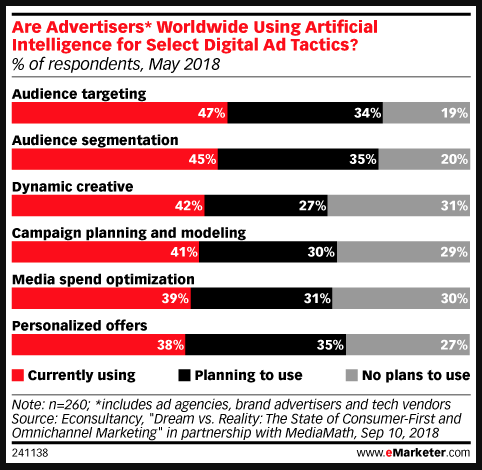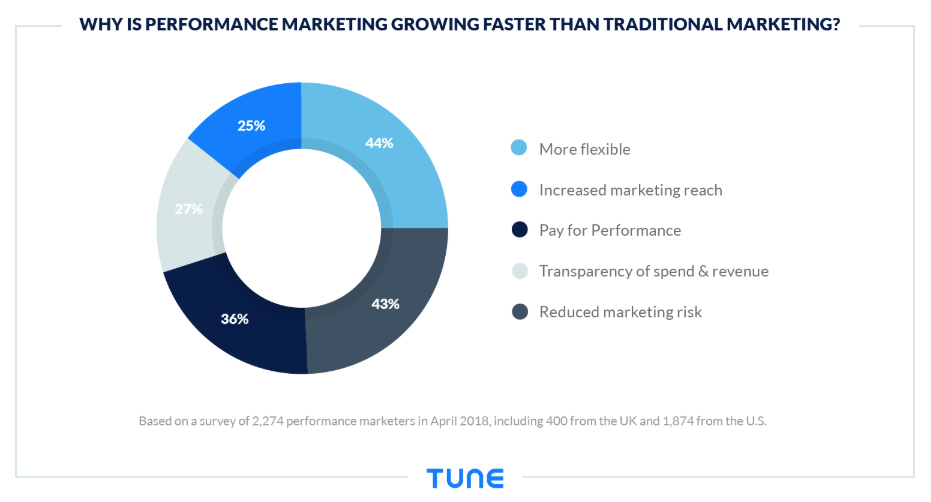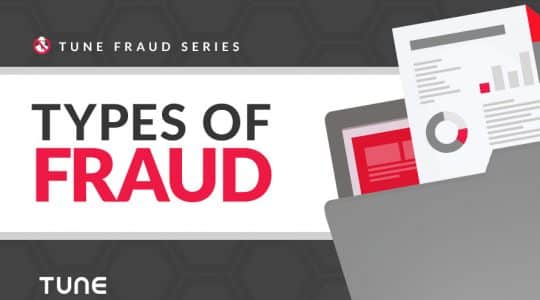
Photo by Steven VanDesande Jr on Unsplash
We’re nearing the final days of 2018 — hard to believe, I know — which means recap posts galore! As is tradition, we’re going to check all the predictions we’ve made throughout the year. (Gotta keep ourselves honest, right?) Below, we lay out some of the trends we predicted at the beginning of the year and during our mid-year check-in, compared to where we stand today.
Online Advertising Will Overtake Traditional Advertising
What we said then: Researchers estimate that marketers will spend $237 billion on online advertising in 2018. That’s about 44% of all global advertising dollars — meaning it’s a matter of time before online advertising overtakes traditional advertising (like print, radio, and television) once and for all.
What we say now: According to eMarketer, online advertising came close but still has a year or two before it overtakes traditional advertising in terms of spend. eMarketer predicts that by 2020, digital’s share of total advertising will finally reach that 50% threshold. So close, and yet so far …
Customers Are Becoming the New Cohort
What we said then: It used to be enough to segment by geography or platform, but performance marketers are increasingly going to need to shift their focus to customers as individuals. Personalization is key. Research shows that personalization can reduce acquisition costs by as much as 50%, lift revenues up to 15%, and perform 42% better than non-personalized content.
What we say now: Yup, we’re sticking to our guns here. eMarketer just released a fascinating report on all things personalization, showing that:
- 38% of marketers are using personalized offers
- 47% of marketers are using audience targeting
- 45% of marketers are using audience segmentation
- 42% of marketers are using dynamic creative
And for those not currently using, the vast majority plan to.
AI Will Become An Ally
What we said then: Marketers can use AI to better understand customer behavior, then personalize experiences accordingly. This will come in handy not only with advertising, but when engaging customers through voice and/or messaging — and accurately measuring the impact.
What we say now: While we’re not convinced that AI is a tool most marketers are completely confident with, we do believe it’s here to stay and will only become more integrated in marketing. Forrester agrees with us, predicting that by 2020, businesses with data-insights-driven teams will grab $1.2 trillion from peers without that same culture. As an example, Amazon recently leveraged automation to reduce “click to ship” time by 225% — down to just 15 minutes. *whistle sound effect* Those kinds of results speak for themselves.

Source: eMarketer / How Marketers Use AI
Optimization Over Acquisition
What we said then: “When building a brand online, too many people rush to buy ads and acquire traffic to drive revenues by brute force,” says Tony Delmercado, co-founder and COO of Hawke Media. “Small efficiency improvements in conversion rates, email capture, and retargeting can pay huge dividends — tighten up the mousetrap first, then buy eyeballs. You’ll acquire and retain customers more cost-efficiently and keep money in your coffers for higher-risk marketing strategies.” Whether it’s retail KPIs, app marketing, or cross-channel e-commerce, engagement is the true driver of ROI.
What we say now: Not to brag, but we’re dead on here. Of course we’re still big on optimization; it is a standout part of the TUNE Partner Marketing Platform, after all. Yes, you need to dial in all the pieces of your acquisition strategy, but don’t stop there — also dial in your entire funnel so it’s not just about acquisition, but retention, engagement, and overall customer lifetime value.
Performance-Based Growth Isn’t Slowing Down
What we said then: One of the most notable trends is the fast clip at which performance marketing continues to grow. With fairly mature industries, you rarely see compound annual growth rates of 10% each year, but that’s exactly what Forrester predicts for performance marketing through 2020 at the minimum.
What we say now: It’s no secret we’ve been fans of performance marketing since, literally, the start. So we’re like proud parents watching it find its stride. We’ve always believed all marketing should be measured, and we think that’s going to transform from a once-novel ideal to an industry-accepted standard in no time.
Brand and Enterprise Budgets Are Moving
What we said then: Along with that growth comes major moolah being allocated to it. In our survey with Acceleration Partners, an average of 62% of brand and enterprise marketing budget was moving toward performance marketing. In fact, 128 of the 2,300 people we surveyed said a full 100% of brand and enterprise marketing budget was going straight to performance in 2018.
What we say now: We still see this trending upward. What’s interesting is now that performance marketing is the “new normal” for marketing, there’s a whole new set of channels in which advertisers can allocate their budgets. There’s social media, video, email, display, influencers, affiliate, loyalty, referral — all driven by performance dollars and performance measurement.
Affiliate Marketing Is More Ubiquitous Than Ever
What we said then: Whereas years ago affiliate marketing was often associated with click-bait ads, nowadays it’s far from dead. Quite the opposite, really, as it’s become as mainstream as brand marketing itself. In 2018, we’re seeing performance-based partnerships in all corners of the marketing ecosystem. Of performance marketers, the majority (31%) work for marketing platforms, followed by agencies and brands (both 25%) and ad networks (16%).
What we say now: Yup, ditto to this one. We’d even go far as to say that if you’re not marketing based on performance, you’re falling behind. Affiliate marketing is now an accepted part of the culture with Instagram influencers and YouTube stars regularly building audiences and sharing their favorite finds. (Read more about how to jump into influencer marketing here.)
Paid and Organic Marketing Are Better Together
What we said then: This year we’re also seeing performance marketers get savvier, planning their performance campaigns alongside organic marketing such as public relations efforts and content series. Our research consistently shows that this is the most effective way to get the most bang for your buck.
What we say now: We’ve studied this extensively (get the full report here). What we’ve seen most recently is not so much that the data has changed, but that marketers are integrating their campaigns in this way more effectively. You will rarely catch a random campaign these days — everything is thought out, orchestrated, and coordinated in single dashboards, scheduling tools, and one-stop measurement platforms. (We have a recommendation if you’re still looking.)
The Industry Is Taking Steps to Combat Fraud
What we said then: At TUNE, we’ve long believed that fraud is not performance marketing’s issue, but a challenge the entire industry must unite to overcome. One way we see this happening is through partners better aligning their incentives. As we move through 2019, we’re hopeful that performance marketers on both sides of the industry will be incentivized to show ROI, instead of just traffic or leads.
What we say now: Yes, yes, and more yes! It’s clear fraud isn’t going away any time soon, but brands and agencies are catching on as to how they can protect themselves by taking action (watching for suspicious traffic, pre-qualifying publishers, considering private marketplaces, etc.) and how they can work with the rest of the industry to minimize it.
Over the course of the year, we’ve seen brands like Google introduce new policies and technology like page-level enforcements to combat it. The IAB has also been heavily involved, introducing an industry-wide defense against spoofing called ads.text. Even various regulatory boards in the U.K., Ireland, and the U.S. announced earlier this year that they’ll be teaming up to clean up digital advertising. You can find our views on ITP 2.0 and similar subjects on our blog.
Looking Ahead to 2019
Now the fun part … we’re already getting excited to make our predictions for (*gulp*) 2019. Do you have yours lined up? Care to share ‘em with us? One thing is for sure: performance marketing is a wild industry to be a part of, and we wouldn’t have it any other way!
If you have predictions (or questions) for us, leave a comment below!
Author
Becky is the Senior Content Marketing Manager at TUNE. Before TUNE, she handled content strategy and marketing communications at several tech startups in the Bay Area. Becky received her bachelor's degree in English from Wake Forest University. After a decade in San Francisco and Seattle, she has returned home to Charleston, SC, where you can find her strolling through Hampton Park with her pup and enjoying the simple things in life.




